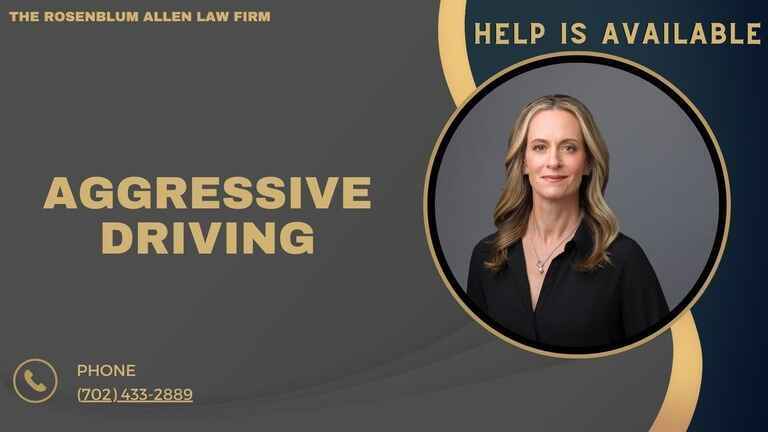What is Aggressive Driving?
Aggressive driving refers to a set of dangerous driving behaviors that can put others at risk. It goes beyond minor traffic violations, involving deliberate actions that can cause accidents, injuries, or worse.

Definition of Aggressive Driving
Aggressive driving includes a wide range of hostile behaviors behind the wheel. It’s often an emotional reaction to traffic or stress.
Some common behaviors associated with aggressive driving include:
- Speeding
- Tailgating (following too closely)
- Cutting off other drivers
- Weaving through traffic
- Ignoring traffic signs or signals
- Flashing headlights aggressively
Each of these actions increases the chances of an accident.
Difference Between Aggressive Driving and Road Rage
Though people sometimes confuse the two, aggressive driving and road rage are not the same. Aggressive driving involves dangerous, but non-violent, behavior. Road rage, on the other hand, is when a driver takes it further and intentionally tries to harm others.
Aggressive Driving:
- Speeding and swerving in traffic
- Failing to yield
Road Rage:
- Physically confronting another driver
- Using a vehicle to hit or block another car
Aggressive driving can escalate into road rage, which carries more serious legal consequences.
Common Causes of Aggressive Driving
Many factors can trigger aggressive driving. These reasons are often tied to a driver’s mental or emotional state, or external conditions on the road.
External Factors Contributing to Aggressive Driving
- Traffic congestion: Heavy traffic or being stuck in gridlock often frustrates drivers, leading them to act recklessly to get ahead.
- Running late: A common reason for aggressive driving is feeling rushed or late for an appointment, which causes drivers to speed or take dangerous shortcuts.
Internal Factors Leading to Aggressive Driving
- Emotional stress: Personal or work stress can spill over into a person’s driving. When tensions are high, drivers are more likely to take risks.
- Personality traits: Some drivers are naturally more prone to risky behavior, feeling overly confident in their abilities behind the wheel or impatient with slower drivers.
Identifying these causes can help prevent dangerous driving situations before they occur.

Common Behaviors Associated with Aggressive Driving
Reckless behavior behind the wheel includes a range of dangerous actions. Knowing what to watch for can help you avoid becoming a victim of aggressive drivers or engaging in those behaviors yourself.
Speeding and Reckless Driving
Speeding is one of the most frequent forms of driving aggressively. It’s more than just going above the speed limit. It can also involve:
- Driving much faster than surrounding traffic
- Failing to slow down in construction zones or school areas
- Ignoring weather conditions that make speeding even riskier
Tailgating is another aggressive behavior, where the driver follows closely behind another vehicle. This creates a higher risk of rear-end collisions.
Erratic Lane Changes
Changing lanes quickly or without signaling is another sign. This includes:
- Weaving through traffic: Moving from lane to lane without any real gain in speed
- Cutting off other drivers: Changing lanes without leaving enough space between vehicles, forcing others to brake
These behaviors not only cause stress for other drivers but also increase the chances of accidents.
Disregarding Traffic Laws
Aggressive drivers often ignore traffic signs, signals, and other rules designed to keep the roads safe. This might include:
- Running red lights or stop signs
- Failing to yield to pedestrians
- Ignoring speed limits or construction signs
This behavior can quickly lead to accidents, injuries, or fatalities, affecting not just the driver but everyone around them.
Legal Consequences of Aggressive Driving
Aggressive driving isn’t just dangerous—it’s illegal. If you’re caught driving aggressively, the penalties can be serious. Depending on the severity, you might face fines, license suspension, or even criminal charges.
Traffic Violations and Penalties
When drivers engage in aggressive behavior, they are breaking traffic laws. This can lead to various penalties:
- Fines: Drivers may be issued tickets that come with hefty fines. The exact amount can depend on the specific offense and the state where it happened.
- Points on your license: Accumulating too many points from traffic violations can result in losing your license.
- License suspension or revocation: If it’s severe, or if it’s a repeat offense, your license might be suspended or taken away completely.
These penalties not only affect your ability to drive but can also raise your insurance rates.
Criminal Charges Related to Aggressive Driving
In some cases, it can lead to more than just fines and tickets. If your driving puts others at significant risk or causes harm, criminal charges could follow.
- Reckless driving: Aggressive driving behaviors, like excessive speeding or running red lights, may be classified as reckless driving. This is a criminal offense, which carries more severe consequences than a simple traffic violation.
- Felony charges: If your driving causes injury or death, you could face felony charges. This could mean jail time and significant fines, along with civil lawsuits from the injured parties or their families.
Civil Liabilities for Aggressive Driving
If your driving leads to an accident, you could also face civil lawsuits. Victims of these accidents can sue you for damages, which can cover a range of losses, including:
- Medical expenses: Costs related to the injuries caused by the accident.
- Property damage: Compensation for repairs to the vehicles involved.
- Lost wages: If the victim misses work due to the accident, they can seek compensation for their lost income.
- Pain and suffering: Victims might also be awarded damages for the emotional and physical distress caused by the accident.
These lawsuits can add up to significant financial penalties, especially if the accident caused serious injuries or fatalities.

How Aggressive Driving Affects Personal Injury Cases
Aggressive driving can heavily impact personal injury cases. When aggressive driving is involved, it’s often easier for the injured party to prove fault. This can lead to higher compensation for the victims.
Proving Aggressive Driving in Court
In personal injury cases, it’s crucial to prove that the at-fault driver was acting aggressively. There are several ways to demonstrate this:
- Eyewitness testimony: Other drivers or pedestrians may have seen the aggressive behavior and can testify to it.
- Video footage: Many intersections and highways now have cameras that can capture footage of the incident. Dashboard cameras can also provide crucial evidence.
- Police reports: If the police arrived on the scene, their report might include evidence of aggressive driving.
This evidence is critical for building a solid personal injury case.
Impact on Settlement Amounts
When aggressive driving is involved, it can increase the compensation the victim receives. Here’s why:
- Clear fault: Aggressive driving makes it easier to prove that the driver was at fault. This can speed up the settlement process.
- Punitive damages: In extreme cases, a judge might award punitive damages. These are extra payments designed to punish the driver for particularly reckless or dangerous behavior.
Aggressive driving not only endangers lives but also makes legal and financial consequences more severe for the driver.
Preventing Aggressive Driving
Aggressive driving is dangerous, but it can be prevented. Both individual drivers and lawmakers can take steps to make the roads safer for everyone.
Personal Responsibility for Safer Driving
Every driver can play a part in preventing aggressive driving. Here are some ways to keep yourself and others safe on the road:
- Plan ahead: Give yourself extra time to reach your destination. Rushing can lead to frustration, which increases the chance of driving aggressively.
- Stay calm: Keep your emotions in check. If someone cuts you off, take a deep breath and let it go. Reacting in anger only makes things worse.
- Follow traffic laws: Speed limits and traffic signals exist to keep everyone safe. Sticking to them helps prevent situations that could lead to aggressive driving.
- Avoid distractions: Distracted driving can lead to mistakes that frustrate other drivers. Stay focused on the road to avoid conflicts.
- Be patient: Traffic jams and slow drivers are part of the experience. Remind yourself that arriving safely is more important than shaving a few minutes off your drive.
Public Awareness Campaigns and Education
Education plays a huge role in preventing aggressive driving. Many cities and states run awareness campaigns to teach drivers the dangers of aggressive driving.
Some common approaches include:
- Public service announcements: These often highlight the risks of aggressive driving and encourage safe behaviors.
- Driver’s education: Teaching new drivers about the consequences of aggressive driving can lead to safer habits.
- School programs: Targeting young drivers in high schools helps to prevent bad habits before they form.
- Billboards and advertisements: Visual reminders on the road can prompt drivers to stay calm and patient.
Law Enforcement Initiatives
Law enforcement also plays a critical role in reducing aggressive driving. Police can deter this behavior by increasing their presence on the roads.
Common strategies include:
- Increased patrols: More officers on the roads can lead to quicker responses to aggressive driving incidents.
- Ticketing and fines: Handing out citations for aggressive behavior like speeding or tailgating can discourage dangerous driving.
- Use of technology: Speed cameras and red-light cameras help catch aggressive drivers who try to beat traffic signals or drive too fast.
Laws and Regulations
In some areas, new laws have been created to address aggressive driving directly. These laws often carry harsher penalties for behaviors considered aggressive.
Some of the common legal approaches include:
- Aggressive driving laws: These laws target specific behaviors like tailgating, weaving in and out of traffic, or excessive speeding.
- Increased penalties: In some states, aggressive drivers face higher fines or longer license suspensions than for other violations.
- Zero-tolerance policies: Some cities have zero-tolerance policies for aggressive driving, meaning that even minor infractions can result in steep penalties.
By combining public education, enforcement, and legal action, aggressive driving can be reduced on a broader scale.

The Role of Attorneys in Aggressive Driving Cases
When aggressive driving leads to an accident or injury, an attorney can help guide victims through the legal process. These cases can be complex, and having the right representation can make a big difference.
When to Seek Legal Help
It’s important to contact an attorney if you’ve been involved in an accident caused by an aggressive driver. Here’s why:
- Understanding your rights: A lawyer can explain what rights you have and what compensation you might be entitled to.
- Building your case: Attorneys know what kind of evidence is needed to prove aggressive driving and can help you gather it.
- Navigating legal procedures: From filing claims to negotiating settlements, an attorney helps manage the often confusing legal process.
Victims of aggressive driving accidents may be entitled to compensation for:
- Medical expenses
- Property damage
- Lost wages
- Pain and suffering
How Attorneys Can Prove Aggressive Driving
Attorneys use a variety of methods to prove that aggressive driving was responsible for an accident. This might include:
- Eyewitness testimony: Other drivers or pedestrians who witnessed the aggressive behavior can provide crucial statements.
- Video footage: Dashcam videos or traffic cameras can show the reckless actions of the driver leading up to the accident.
- Expert testimony: Sometimes, specialists like accident reconstruction experts or medical professionals help support the case by explaining how the aggressive driving caused the accident.
The Legal Strategies Used in Aggressive Driving Cases
Lawyers often use specific strategies to prove liability and secure compensation in aggressive driving cases. These strategies can include:
- Filing a personal injury claim: If the aggressive driver caused injury, a personal injury claim can be filed to recover damages.
- Pursuing punitive damages: In some cases, courts may award additional damages as punishment for particularly reckless or dangerous behavior.
- Negotiating settlements: Many cases are resolved before going to court, with attorneys negotiating settlements on behalf of their clients.
Benefits of Hiring an Experienced Attorney
Having the right legal representation is essential in these cases. An experienced attorney can:
- Increase your chances of a successful claim: Lawyers with experience in aggressive driving cases understand the complexities and how to navigate them.
- Handle the stress of legal proceedings: An attorney manages the paperwork, deadlines, and negotiations, allowing you to focus on recovery.
- Maximize your compensation: Attorneys know how to assess the full extent of your losses and push for fair compensation.
Aggressive driving cases can be challenging, but with an experienced attorney, victims have a better chance of getting justice and recovering damages.

Breaking It Down for You
Aggressive driving poses serious risks for everyone on the road, leading to physical injuries, emotional trauma, and financial burdens. Understanding the definition and various forms of aggressive driving is essential for both drivers and victims. By recognizing the signs of aggressive driving and taking proactive steps, we can create a safer driving environment for all.
Preventing aggressive driving requires collective efforts from individuals, communities, and law enforcement. By promoting awareness, advocating for safer driving practices, and encouraging responsible behavior behind the wheel, we can work towards reducing the number of aggressive driving incidents.
If you or someone you know has been affected by aggressive driving, seeking legal guidance can help navigate the complexities of the situation. Experienced attorneys can provide support in pursuing compensation and holding responsible parties accountable. Remember, safe driving benefits everyone and contributes to a healthier, more secure community.

Frequently Asked Questions
What are some common signs of aggressive driving?
Aggressive driving can manifest in various behaviors, including tailgating, frequent lane changes without signaling, speeding, and making rude gestures. Other signs include honking excessively, yelling at other drivers, and weaving in and out of traffic.
How does aggressive driving differ from road rage?
Aggressive driving refers to behaviors that increase the risk of accidents, such as speeding and tailgating. In contrast, road rage is an extreme form of aggressive driving characterized by anger and violent behavior toward other drivers. Road rage can involve threats, physical altercations, or deliberate attempts to harm another driver.
What can I do if I encounter an aggressive driver on the road?
If you encounter an aggressive driver, it’s best to remain calm and avoid engaging with them. Keep a safe distance from their vehicle, avoid eye contact, and do not respond to their aggressive behavior. If you feel threatened, find a safe place to pull over and report the aggressive driver to the authorities.
Are there legal consequences for aggressive driving?
Yes, aggressive driving can lead to various legal consequences. Depending on the severity of the behavior, drivers may receive citations, face increased insurance premiums, or even face criminal charges if their actions result in injury or damage to others.
How can I report aggressive driving in my area?
You can report aggressive driving by contacting local law enforcement or the police department. Provide as much information as possible, including the vehicle’s license plate number, description, location, and a detailed account of the aggressive behavior.
What should I do if I have been involved in an accident caused by aggressive driving?
If you’re involved in an accident caused by aggressive driving, ensure everyone’s safety first. Call the police, seek medical attention if necessary, gather information from the other driver and witnesses, and document the scene. Afterward, consider consulting an attorney to discuss your legal options.
Are there any preventive measures I can take to avoid aggressive driving behaviors?
Yes, you can adopt several strategies to avoid aggressive driving behaviors. Practice defensive driving by staying aware of your surroundings, maintaining a safe following distance, and using turn signals. Additionally, try to remain calm in stressful driving situations and give yourself plenty of time to reach your destination to avoid feeling rushed.
What role does education play in preventing aggressive driving?
Education is crucial in preventing aggressive driving. By raising awareness about the dangers and consequences of aggressive driving behaviors, individuals can make informed choices on the road. Driver education programs and community initiatives can help promote safe driving practices and encourage responsible behavior.

Glossary
Accident Documentation: The process of collecting and recording details about an accident scene, including photographs, witness statements, and police reports, which can be critical for insurance claims or legal proceedings.
Aggressive Driving: A pattern of dangerous driving behaviors that increase the risk of accidents, including speeding, tailgating, and weaving through traffic.
Citation: A legal notice issued by law enforcement to a driver for violating traffic laws, which can result in fines or points on the driver’s record.
Defensive Driving: A driving strategy that emphasizes awareness of potential hazards and the ability to respond to them safely, helping to prevent accidents.
Defensive Driving Course: A training program designed to teach drivers strategies for safe driving, improving their ability to anticipate and respond to hazards on the road.
Driver Education Programs: Courses designed to teach new drivers about traffic laws, safe driving techniques, and the responsibilities of being a licensed driver.
Emergency Services: Public services that respond to urgent situations, including police, fire departments, and medical personnel, often contacted in the event of an accident.
Insurance Premium: The amount of money an insured person pays for their insurance coverage, which can increase following traffic violations or accidents.
License Plate Number: The alphanumeric code displayed on a vehicle’s registration plate, used for identification and tracking by law enforcement.
Road Rage: A more intense form of aggressive driving characterized by hostile behavior, often resulting in threats or physical altercations between drivers.
Tailgating: The act of driving too closely behind another vehicle, often causing pressure on the driver in front and increasing the risk of a rear-end collision.
Traffic Violation: Any breach of traffic laws, including speeding, running a red light, or aggressive driving behaviors, which can result in legal repercussions.

Additional Resources for You
For further legal advice and resources, we invite you to explore the following:
Criminal Defense Attorneys: Our team of dedicated lawyers are ready to assist you in your criminal defense case.
Felonies in Nevada: Understand the legal implications and defense solutions for felonies in the state of Nevada.
Attorneys Answer Your Questions About Miranda Rights: Learn more about your rights during a police interrogation.
Firearms Defense Lawyers: Facing charges related to firearms? Our team can help.
Theft Defense Lawyers: Get assistance for your theft-related charges from our knowledgeable lawyers.
Winning Felony Cases in Nevada: Discover how our seasoned attorneys have successfully won felony cases in Nevada.
Drug Possession Defense Lawyer: If you’re faced with drug possession charges, we can provide the legal defense you need.
Marijuana Possession Questions? We’ve Got Answers.: Navigate the complexities of marijuana laws in Las Vegas with our guidance.
Juvenile Defense Lawyers: Our experienced attorneys are here to protect the rights of minors facing legal charges.
Juvenile Charges: Get Legal Advice: If your child has been charged with a crime, we can offer pertinent legal advice.
Charged with Solicitation? We Can Help.: Solicitation charges can be challenging, but our team is here to help.
Nevada Traffic Tickets: Need help with a traffic ticket in Nevada? Our attorneys can assist.

A Special Message from Our Lead Attorney

Molly Rosenblum
Dear Reader,
Firstly, I want to express my gratitude for taking the time to review these resources.
I understand that you may be facing a challenging situation, and I hope the information provided has been helpful and enlightening.
My team and I at Rosenblum Allen Law Firm are dedicated to offering our expertise and guidance to those who need it most.
We’re prepared to navigate the complexities of your case, ensuring you’re informed and supported throughout the process.
Please know you don’t have to face this situation alone.
Please reach out to us at (702) 433-2889.
Let’s discuss your circumstances and start working on the best possible outcome for your situation.
I look forward to hearing from you soon.
Best Regards,
Molly Rosenblum, Esq.



